| FEATURED
Article By Joe Livernois
Photos by Tony Livernois
Enlarge
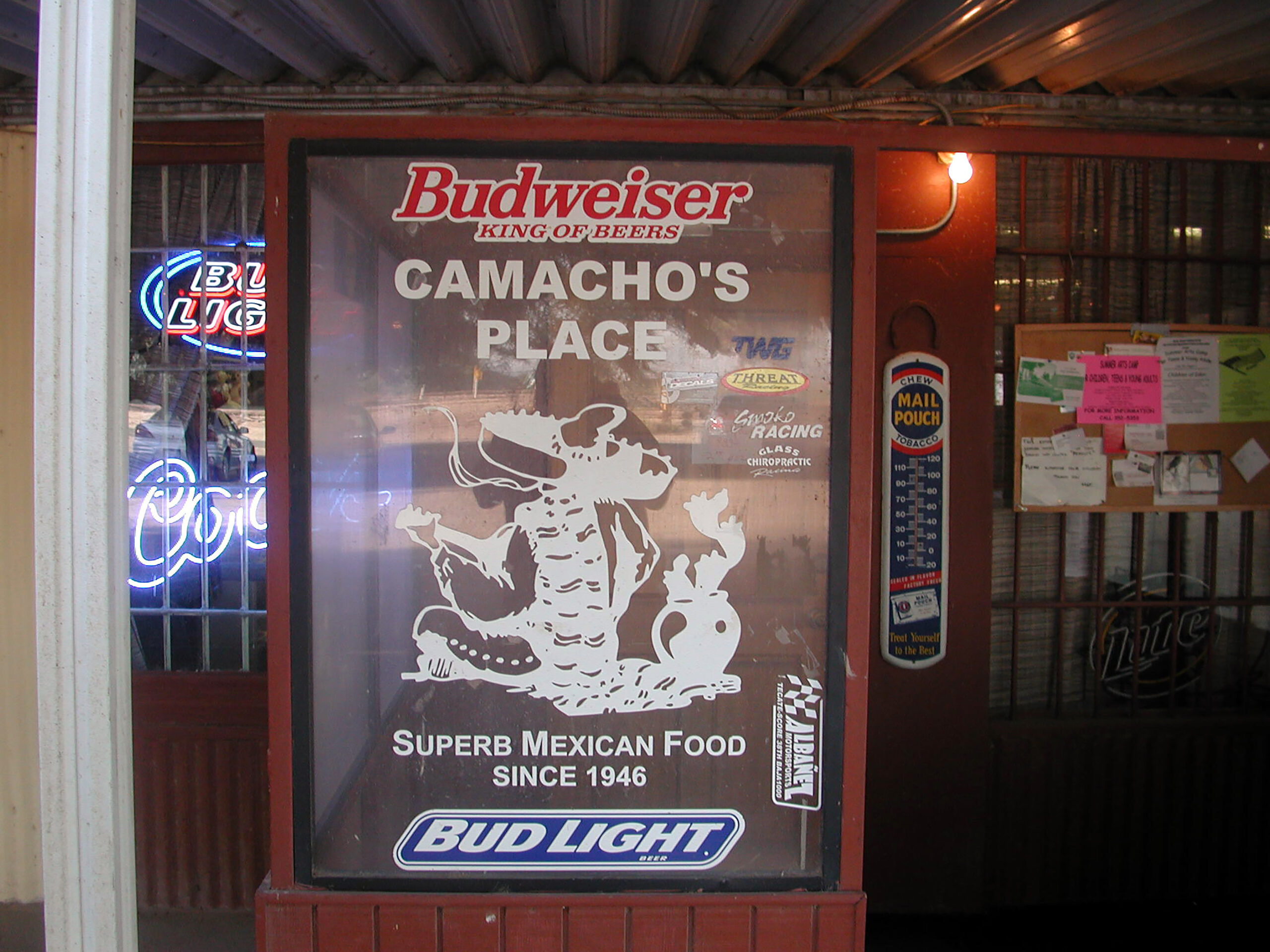
It was never much to look at. The restaurant was a shack when it opened back in the ‘40s, and it’s a shack today. The building seems to be held together by exterior walls of corrugated aluminum siding, the type of material more commonly used as fencing for hog farms. The concrete that forms the floors is reinforced with old auto parts and bedsprings. The wall posts and ceiling beams are cast-off railroad ties. The parking lot is a habitat for rattlesnakes and stray country dogs.
Camacho’s Place. It’s a Mexican food palace situated way the hell out in the country, about five miles from the Mexican border in the dried-up alkaline of a desiccated ancient sump known as the Imperial Valley. Confused strangers might find Camacho’s on a map, but they rarely recognize it as a restaurant when they drive past it the first couple of times.
Those quesadillas, by the way, are the gods' ambrosia. They are puffed-up clouds of grease, cheese and contentment that drip down the arms and into the soul.
Richard and Juanita Camacho established the place as a general store-slash-pool room for braceros back in 1946. Before that, Richard was out hand-delivering burritos to farmworkers living in makeshift campgrounds along the nearby New River. When the farmers’ bus drivers learned what was happening, the Camachos’ kitchen became a required morning stop for buses filled with farmworkers to pick up lunch bags. Richard and Juanita eventually opened the restaurant, introducing golden-brown rolled tacos and deep-fried, greasy quesadillas to the menu. The kitchen expanded and so did its reputation.
Those quesadillas, by the way, are the gods’ ambrosia. They are puffed-up clouds of grease, cheese and contentment that drip down the arms and into the soul. To clarify, these are Special Quesadillas, not to be confused with the flat, pedestrian cheese-between-tortilla junk available everywhere else in the world. Special Quesadillas are specific to Camacho’s and to the Imperial Valley, and every other quesadilla is a bitter disappointment.
Enlarge
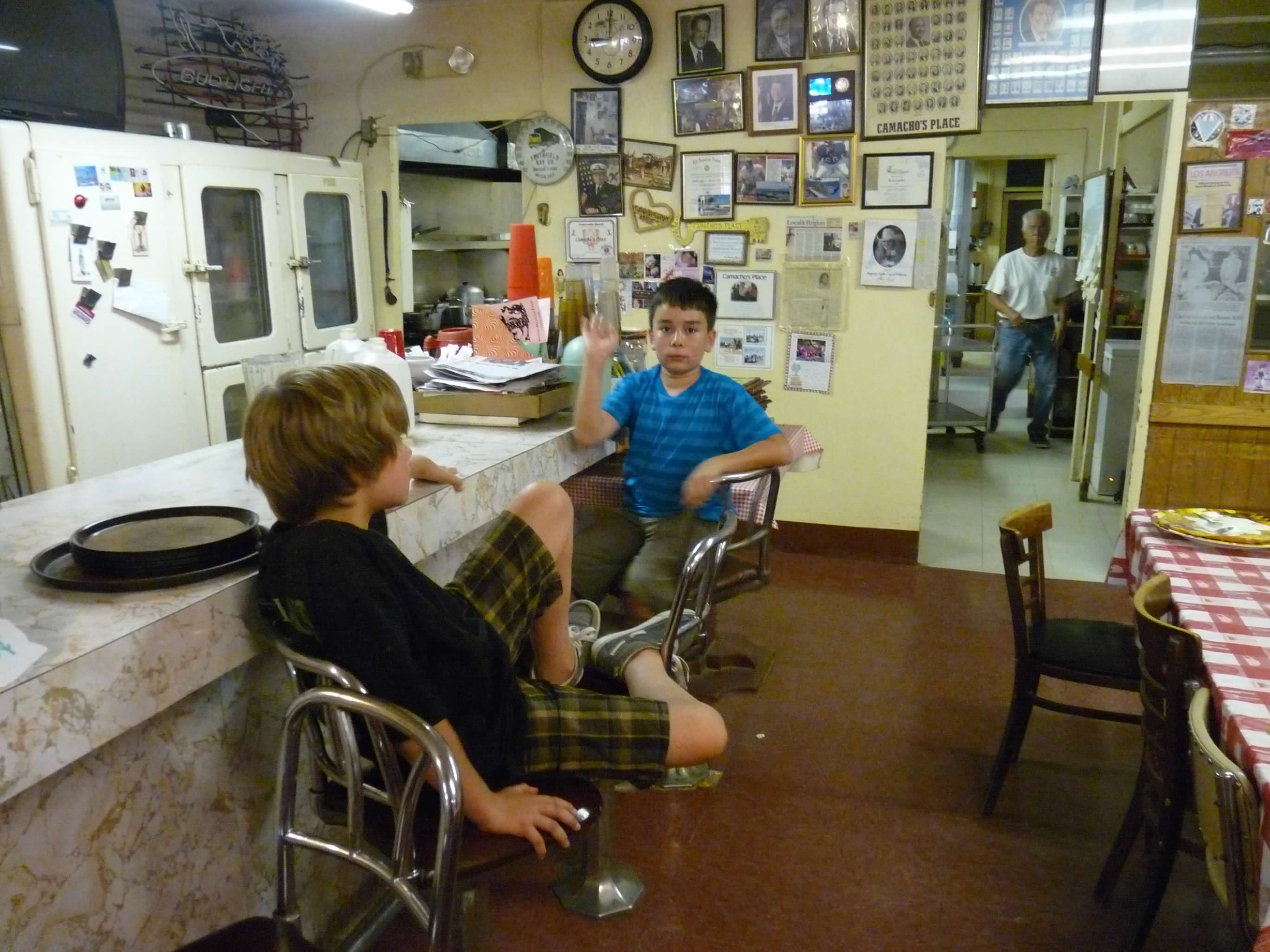
Our family grew up with Camacho’s. It’s the setting for some of my earliest memories. We ate off shaky metal tables covered with red-and-white checkered vinyl tablecloths that dated from the Truman administration. The place was loud with happy voices. When the bells affixed to the front door jangled, every diner in the restaurant looked up reflexively to see who walked in. It was always someone you knew.
After finishing our meals, the kids were allowed to stuff our arms into the ice-cream freezer near the counter and pull out Drumsticks. While we dipped for ice cream cones, the adults moved from table to table to get congenial with the other adults they knew.
If we are lucky, we all have places like Camacho’s Place. They are the restaurants or the institutions that bind us to our past. If they survive as long as Camacho’s, they carry ghosts, spirits and loving memories. For some people, their restaurants are fancy. Others have their diners and delis. My restaurant happens to be the place that put the “shack” in “ramshackle.”
The Camacho family was always there for us, whenever circumstances or celebrations or reunions or weddings or funerals brought us back to the valley.
The decor here is nothing fancy, and is best described as Classic Hodgepodge. The walls are covered with calendars that no one bothered to remove after several decades of December 31s, photographs of local sports heroes and long-dead politicians, and autographed posters depicting the various U.S. Navy Blue Angels aerial teams that have eaten in the place.
The Blue Angels are stationed at the nearby Naval Air Facility every winter — they rehearse their schtick for upcoming airshow seasons — and Camacho’s is the crew’s go-to dining hotspot. Regardless of your opinion about the extravagant government waste that is military stunt teams, it’s still cool to dine in a place where fighter pilots are yucking it up at the next table.
Enlarge

(As legend has it, another pilot, Prince Harry, went unrecognized and was treated indifferently by Camacho’s staff when he dropped in for a meal one day. He had been at the Naval Air Facility to learn how to fly Apache helicopters for the British Army. On his unit’s obligatory visit to Camacho’s, the owner, Rosie Cuellar, committed the faux pas of handing His Royal Aviator a heap of taquitos and ordering him to pass the plates down the table. Rosie was deeply embarrassed when she found out that Harry was that Harry, but if you’ve seen one pilot in Camacho’s, you’ve seen them all.)
The most valuable item in all of Camacho’s is probably the screwiest clock on earth. The numbers on the face of the wacky timepiece are situated counter-clockwise, with hands that run backward over a cartoonish drawing of a man in the throes of timeless confusion. For a long time the clock hung next to a framed portrait of John F. Kennedy. The JFK picture isn’t there anymore, for reasons unexplained.
Enlarge
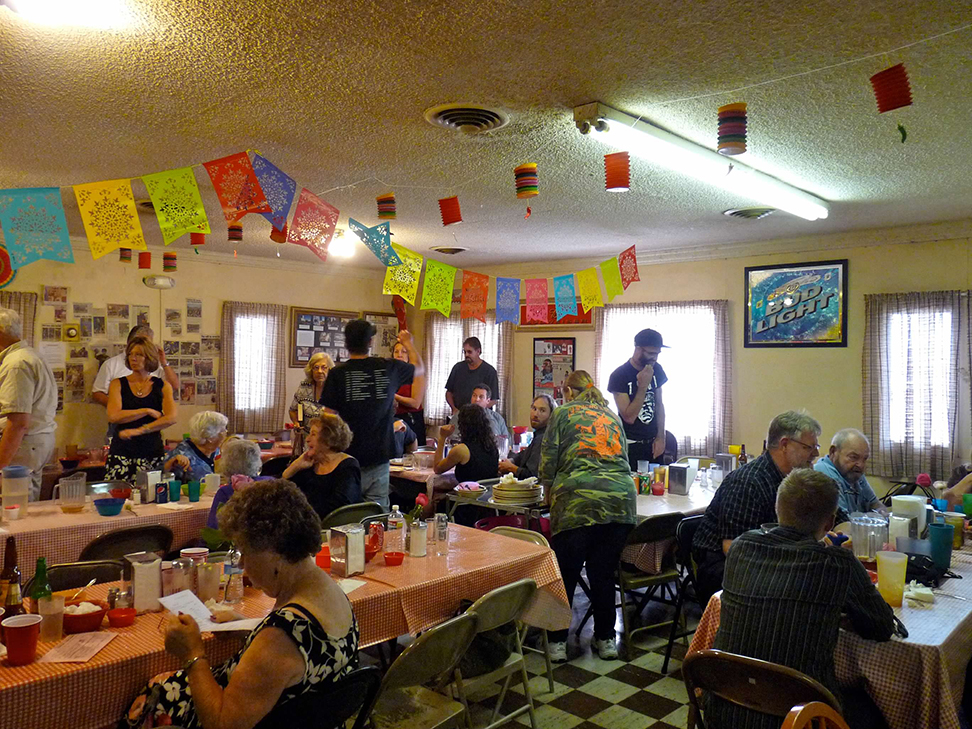
Camacho’s was our place, a half-mile from our shambly ranch house along the Elder Canal. It was the only business within a 10-mile radius. I walked down the canal bank to Camacho’s to catch the school bus. A couple of other country kids sat on the steps leading to the ice house, aflank the restaurant, waiting for the bus. Sometimes Mr. Camacho came out to grab a block of ice for a customer; he’d say hello to us, but that was it. I can’t remember hearing him say much of anything to anyone, except with los barrachos at the counter who played liar’s dice and drank Coors straight out of the can.
The Livernois DNA is embedded in Camacho’s Place. On one wall, between the calendars and the forgotten politicians, hangs an ancient photograph of Sue Brandt, my grandmother. She is grinning into the sunlight, wearing a cute sun hat, with her arm draped over Richard Camacho’s shoulders. Grandma Sue built the little ranch house down the road along the Elder Canal. She knew the Camacho family since the day the place opened. A fan of the taquitos, she washed them down with a single 7-ounce can of Olympia beer.
Enlarge
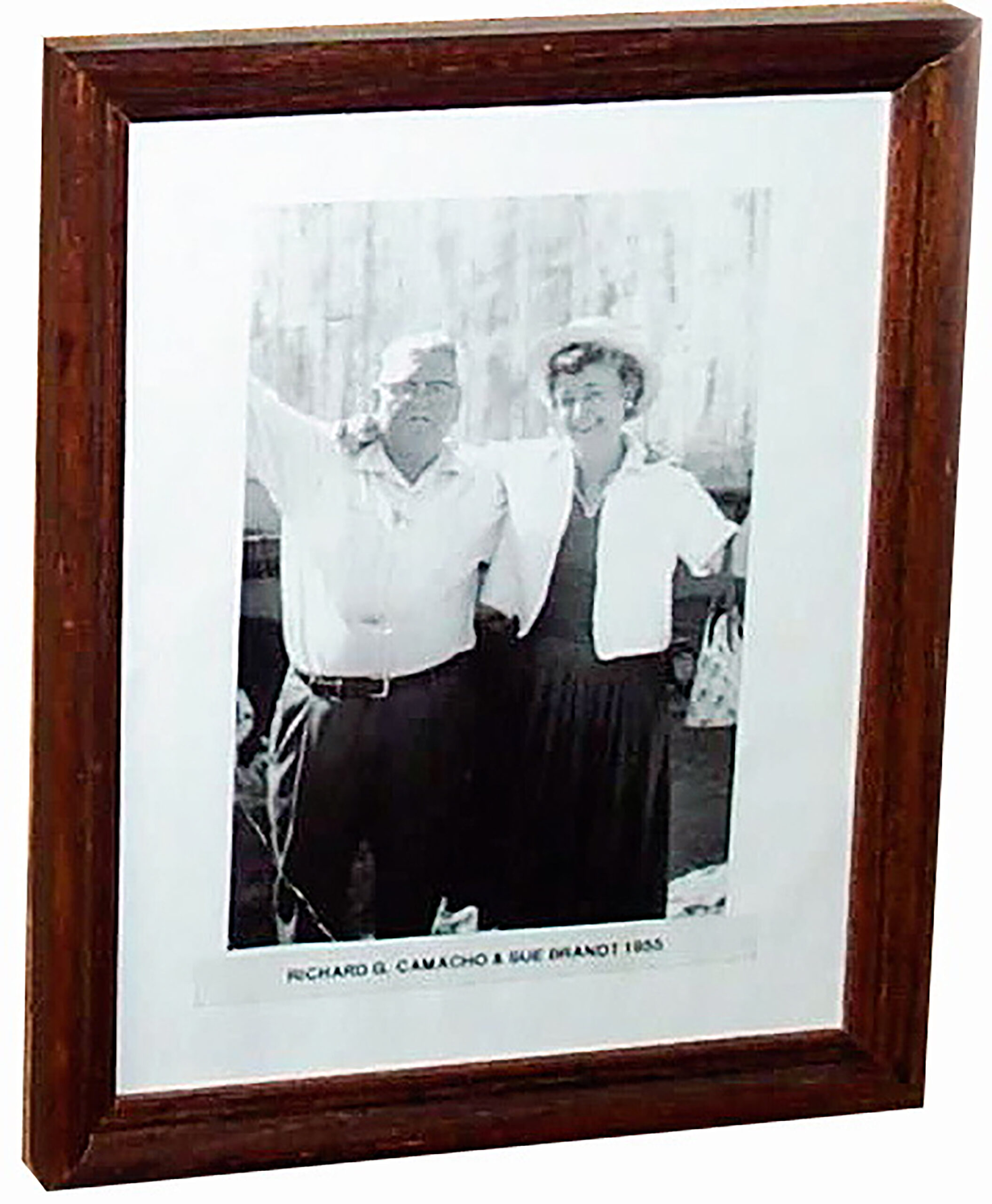
A few feet from the photo hangs a newspaper tintype of a profile I wrote about Camacho’s for the Imperial Valley Press, back when I worked at the newspaper in the late ‘70s. A photo of my niece’s softball team — a team sponsored by Camacho’s and coached by my sister — hangs on another wall.
Even as our family scrambled out of Imperial Valley as quickly as humanly possible, we never lost our jones for Camacho’s. Our mother knew to send boxes of frozen Camacho’s to our new homes for special occasions. The Camacho family was always there for us, whenever circumstances or celebrations or reunions or weddings or funerals brought us back to the valley. It was our headquarters — our base of operations — in the days after Grandma Sue died, after my mother died.
Camacho’s shut down in 2020, due to COVID, and it doesn’t look like it’s coming back. I hadn’t had a quesadilla there in four years, and the joint seemed to be spiraling even then. Usually packed for lunch and dinner, the place was mostly empty when we visited last. I’m afraid Camacho’s is closed for good. At least there’s no word that it’ll reopen at all.
It would be a shame if it doesn’t. It was the knowledge that Camacho’s was waiting for me during my infrequent returns to the Imperial Valley that made my returns to the Imperial Valley tolerable.
My brother Tony has the Camacho’s logo tattooed on his upper arm, and I know what he means. Losing Camacho’s would be like losing a chunk of myself, the part that walked down dusty ditchbanks for school buses and Drumsticks. The part that held happy celebrations. The part that found solace through family losses. The part that was an old friend.
Enlarge
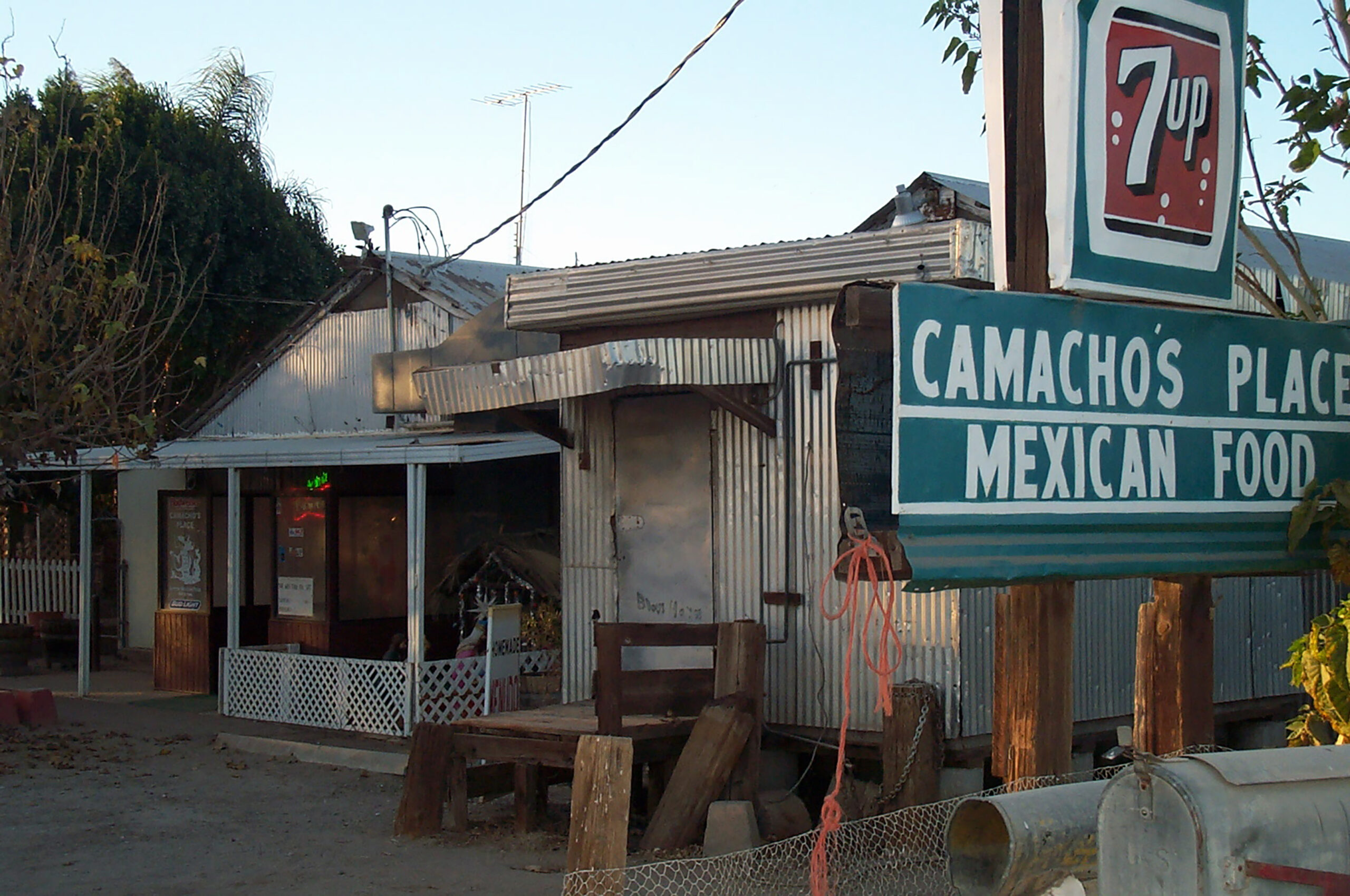
Have something to say about this story? Send us a letter or leave a comment below.